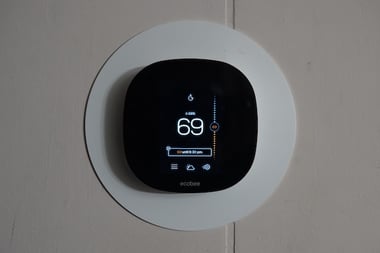 While it may not get very cold often in Florida, many homeowners want their home to stay warm and cozy when it does. Space heaters and fireplaces prove very valuable on those chilly days and nights.
While it may not get very cold often in Florida, many homeowners want their home to stay warm and cozy when it does. Space heaters and fireplaces prove very valuable on those chilly days and nights.
However, like keeping your home cool in those summer months, keeping it warm during the winter months can be challenging and taxing on your comfort and your wallet. If your home never seems to stay cozy and comfortable on those chilly days, then you likely have heat loss, which means the air your AC is pumping into your home is escaping outside.
This often results in an overworked HVAC system and added dollars tacked onto your energy bills. Reducing heat loss (or air conditioning) in your home is one of the best ways to improve your home’s energy efficiency, preserve your HVAC system, and save on your energy bills throughout the year.
3 Key Factors to Reduce Heat Loss
There are several components to an energy-efficient home, and there are three key factors to help reduce heat loss in your home: insulate, replace, and seal.
#1: Insulate
Insulation plays such an important role in keeping your home comfortable. An often overlooked, underinsulated space in homes is the attic. It can be worthwhile to climb up those stairs and see if there is enough insulation there especially since heat rises and can easily escape through it.
Another area of your home to ensure is insulated is your walls. There are building codes in place that mandate the minimum amount of insulation to be used, but these codes are updated often. That means older homes may not be as well insulated. However, removing walls to add more insulation is less than ideal, so you may want to consider adding a layer of blown-in insulation to these parts of your home’s envelope.
#2: Replace
While you may not be replacing walls, you may want to replace your windows and doors. Oftentimes, these installations are an overlooked aspect of keeping your home well insulated to reduce heat loss, but they actually play a pivotal role in your home's energy efficiency and your comfort.
If your home’s windows and doors are warped, have in-efficient framing material, or a single glass pane, they may be allowing ample heat loss in your home. Replacing them with high-performance solutions made with energy-efficient materials, such as vinyl framing, is a great start. They can often be custom-made and even improve your home’s overall energy efficiency, security, and curb appeal.
#3: Seal
Lastly, you should be sure your home is well sealed. There may be small cracks in various parts of your home that allow hot and cold air to leak out of your home. Some common areas you should check to see if they need to be caulked or re-sealed, include:
- Chimneys
- Sink pipes
- Appliance ducts
- Windows
- Doors
- Outlets
- Switch covers
How Will You Reduce Heat Loss in Your Home?
The goal of reducing heat loss in your home is obviously to keep as much of it in your home as possible. Evaluate your home’s envelope to determine if you need to insulate better, replace, or seal parts of it to help keep your home comfortable throughout the year without overworking your HVAC system which can help reduce the cost of your energy bills.
If you do determine that your windows need to be replaced and want more information about window performance, click the button below to download Your Comprehensive Guide to Aluminum & Vinyl Window Performance and the EPA and learn more about these two common, energy-efficient framing materials used in Florida homes.

